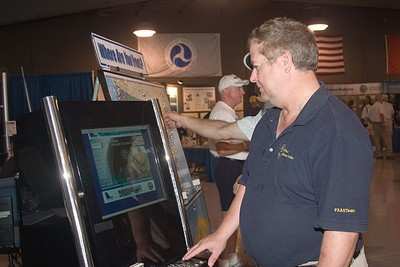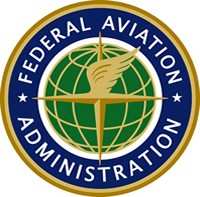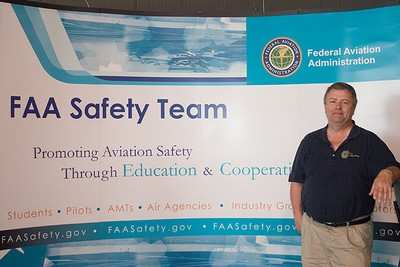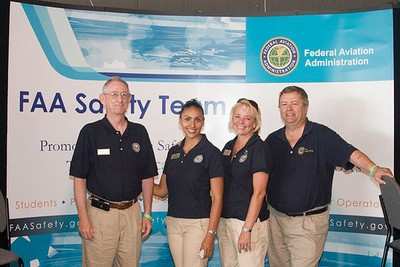Most Ambitious Agency Pilot Safety Program To Date
by ANN Correspondent Dave Ziegler
Pilots who understand the importance of staying proficient are
likely to be familiar with the FAA Pilot Proficiency Award Program,
or "Wings" as it is more commonly known. For decades, this program
and others like it have aimed to increase General Aviation safety
by recognizing and rewarding pilots who undergo regular recurrent
training.

While the Wings program has been largely successful, the
original implementation had some inherent weaknesses: First, while
it did require participants to receive a specific amount of ground
and flight instruction per phase, there was no requirement for a
pilot to actually demonstrate proficiency. Second, the type of
instruction specified was somewhat general and did not necessary
focus on the major causes of accidents. Third, the program was
rigidly defined in Advisory Circular 61-91H, limiting its ability
to adapt with the accumulation and analysis of new accident
data.
Another unforeseen weakness emerged when the FAA attempted to
increase Wings participation by introducing the Wings Weekend, an
event in which pilots could meet all ground and flight training
requirements of a Wings phase in a short period of time. James
Pyles, FAA Safety Team (FAASTeam) Program Manager, talked with ANN
at Oshkosh about these issues. "In concept that sounds like a
really good idea, but it really circumnavigated one of the major
important parts of the Wings program, which is that ongoing
training during the year."

The New FAA Safety Team
 Perhaps one challenge in
managing a larger, more comprehensive proficiency program was the
structure of the former safety program itself. As Pyles explained,
the original safety program had a limited number of Safety Program
Managers in FAA Flight Standards District Offices (FSDOs)
throughout the country, but this was not enough to do what was
necessary and more individuals and organizations needed to get
involved.
Perhaps one challenge in
managing a larger, more comprehensive proficiency program was the
structure of the former safety program itself. As Pyles explained,
the original safety program had a limited number of Safety Program
Managers in FAA Flight Standards District Offices (FSDOs)
throughout the country, but this was not enough to do what was
necessary and more individuals and organizations needed to get
involved.
The FAA's safety program initiative, previously known as the
Accident Prevention Program and later the Aviation Safety Program,
has changed within the last year to the FAA Safety Team, or
FAASTeam. "Some people think that this might just be another name
change," said Pyles, "but in fact it's not; we're actually trying
to change the philosophy and the way we work."
Pyles went on to explain that the aim of the new FAASTeam is to
create a group that promotes safety throughout the industry. "We
are actually forming a team. The FAA is just part of that team, and
we're the organizers." In fact, any person or entity interested in
increasing aviation safety is invited to get involved.
Enter Wings 2.0
Announced less than two months ago, this completely revamped
proficiency program supercedes the original. The most significant
change is that pilots are finally required to demonstrate
proficiency in accordance with the Practical Test Standards. In the
past, a pilot need only attend a safety seminar and log three hours
with a flight instructor, one hour for each of the three areas of
flight outlined in Advisory Circular 61-91H.
The new program goes back to the roots of the original concept
of Wings by encouraging pilots to participate in recurrent training
throughout the year, and gets more personal by guiding a pilot
through a customized training syllabus based on the pilot's
particular flying habits and geographic location. As an example, a
single-engine pilot who flies in mountainous regions will be
presented with training options specifically targeted at reducing
accidents for that type of flying.

This personalization is accomplished by the use of pilot
profiles, which help match the pilot's specific needs to the most
useful training resources available. The training resources
themselves are developed according to statistical data from
accident and incident databases. Pilots still have the opportunity
to choose the areas they would like to increase their proficiency
in, but they will be guided towards the training that best suits
their safety needs.
Unlike the previous Wings program, Internet access is
required -- at the very least, participants must have access
to email providing a CFI or FAASTeam Representative is able to
validate training. According to Pyles, the process is not
dissimilar from IACRA, the system used when applying for new
certificates and ratings.
Pyles made it clear that pilots participating in Wings can
always go back to standard flight reviews if desired and there are
no plans for the current flight review process to disappear.
Participation, however, is highly encouraged. "Proficiency is going
to keep the accident rate down," said Pyles, "and if you are flying
with a CFI more frequently, you're probably not going to build bad
habits that can't be reversed."

Pilots seem to be listening. While participation in the old
program had dropped in recent years, Pyles is optimistic about the
new program, saying that after being on-line for just under two
months, 8,100 people have already signed up and approximately 100
have completed at least the basic phase.
In the second part of this feature, we'll take a closer look at
Wings 2.0 and how it works.
 Classic Aero-TV: In Praise of Alabamas Patriot Aircraft USA
Classic Aero-TV: In Praise of Alabamas Patriot Aircraft USA NTSB Final Report: Cirrus Design Corp SR22
NTSB Final Report: Cirrus Design Corp SR22 ANN's Daily Aero-Term (12.21.25): Dead Reckoning
ANN's Daily Aero-Term (12.21.25): Dead Reckoning ANN's Daily Aero-Linx (12.21.25)
ANN's Daily Aero-Linx (12.21.25) Aero-News: Quote of the Day (12.21.25)
Aero-News: Quote of the Day (12.21.25)







